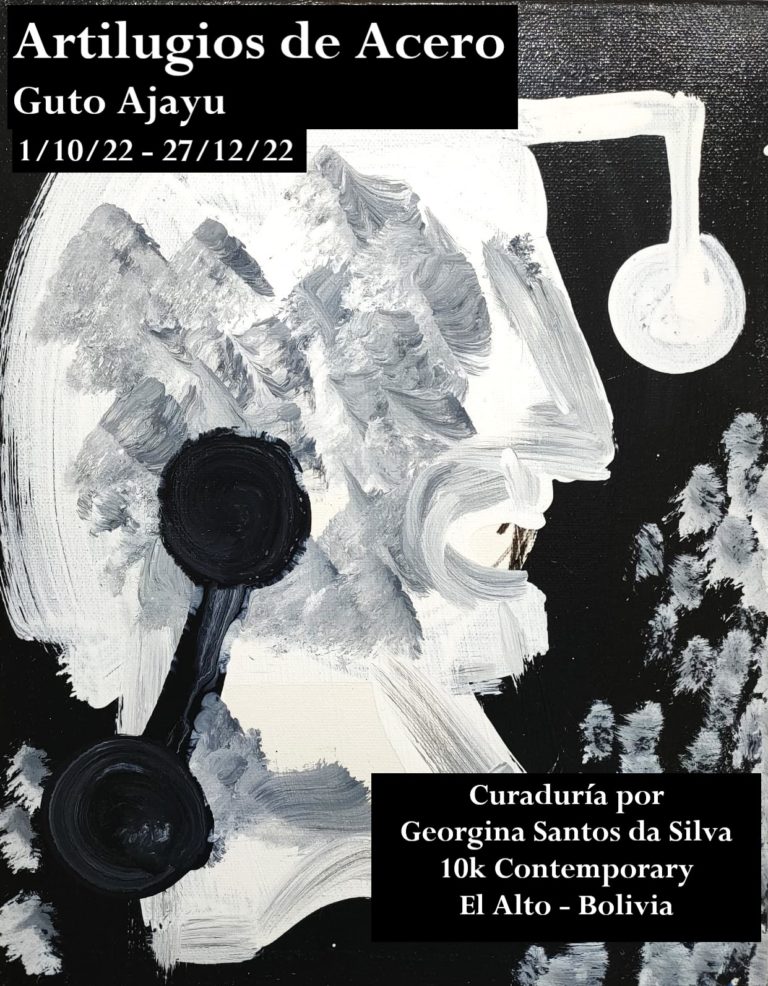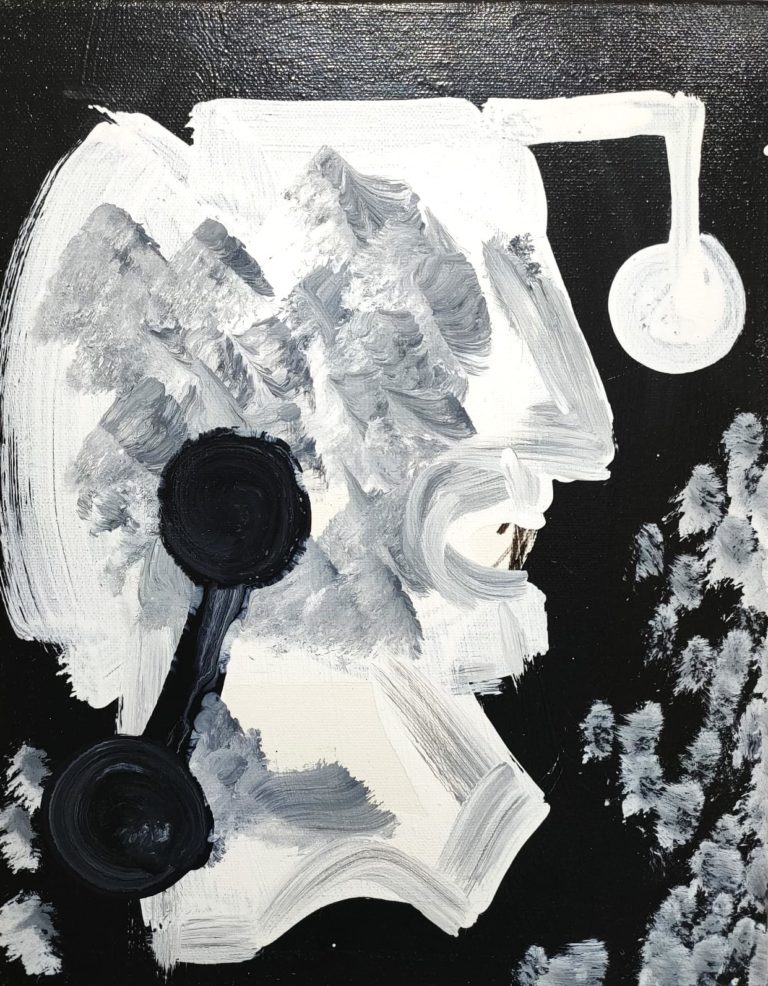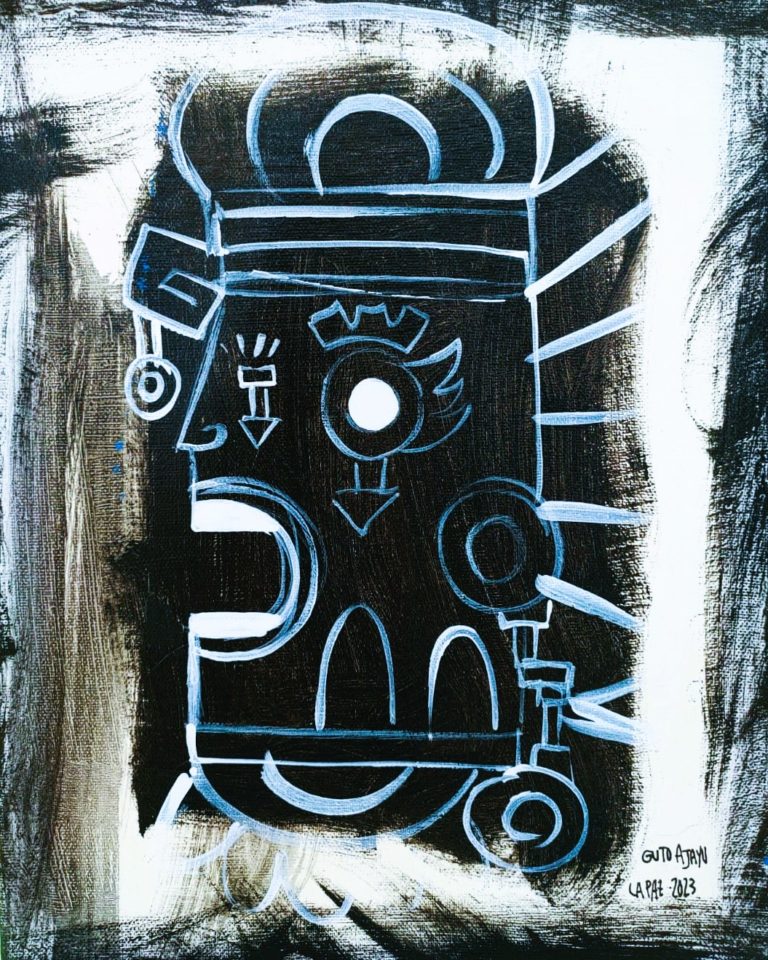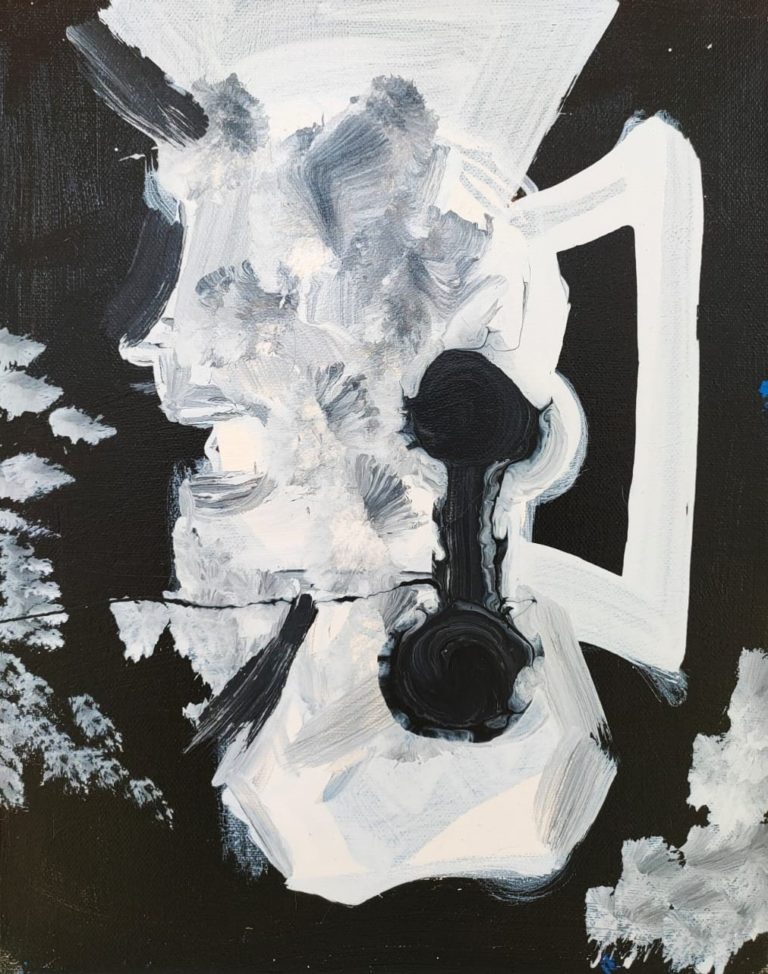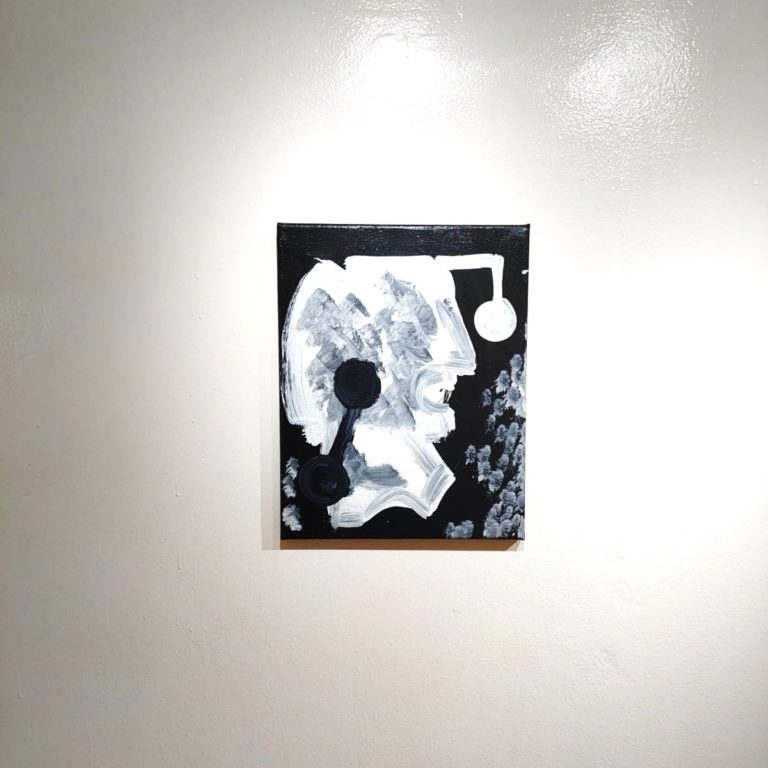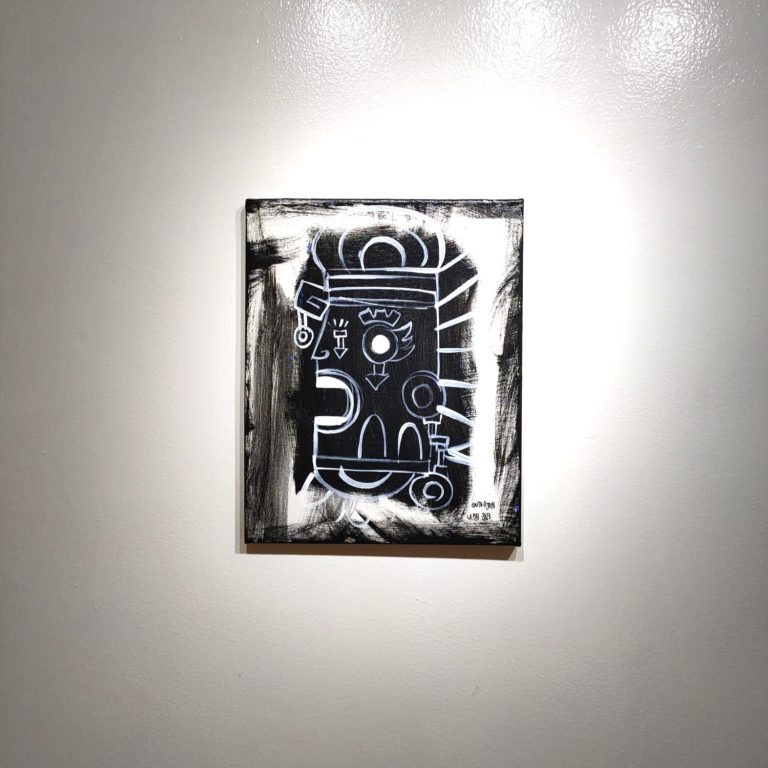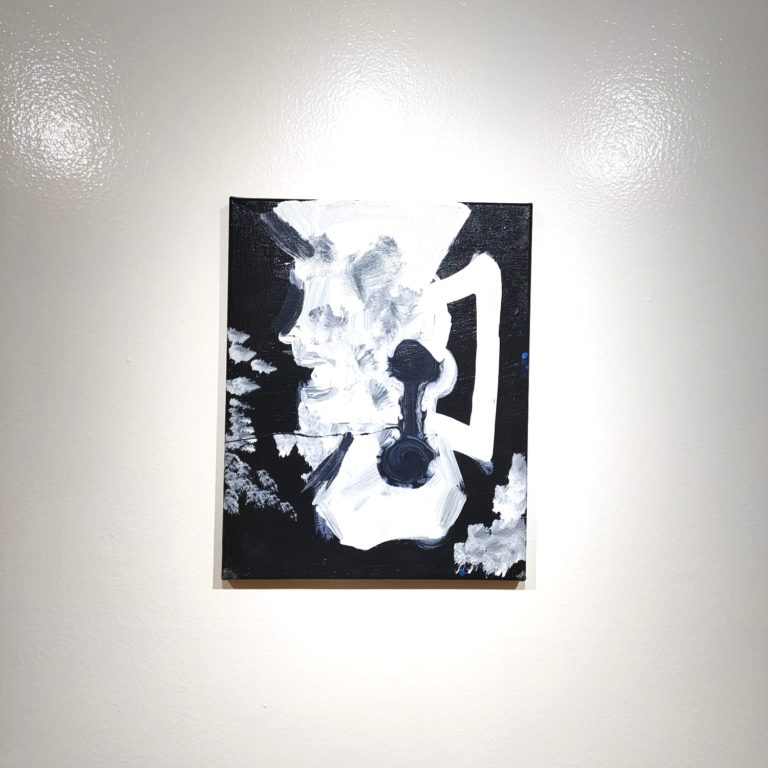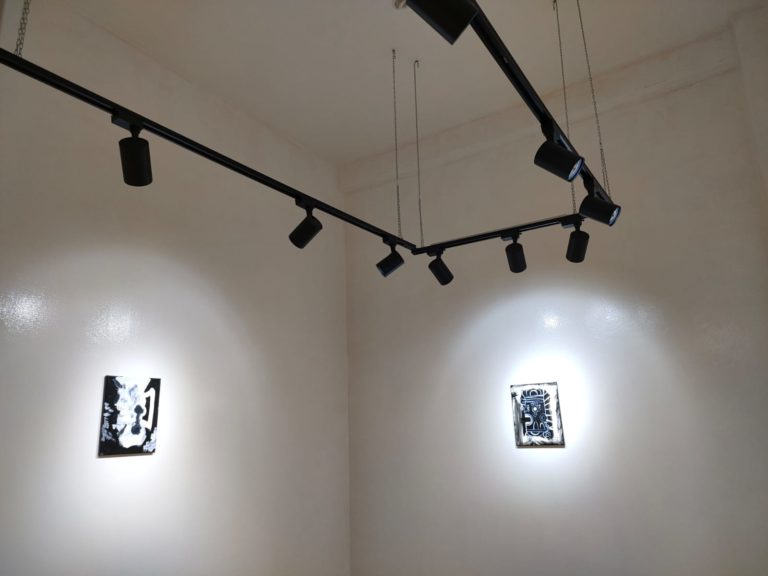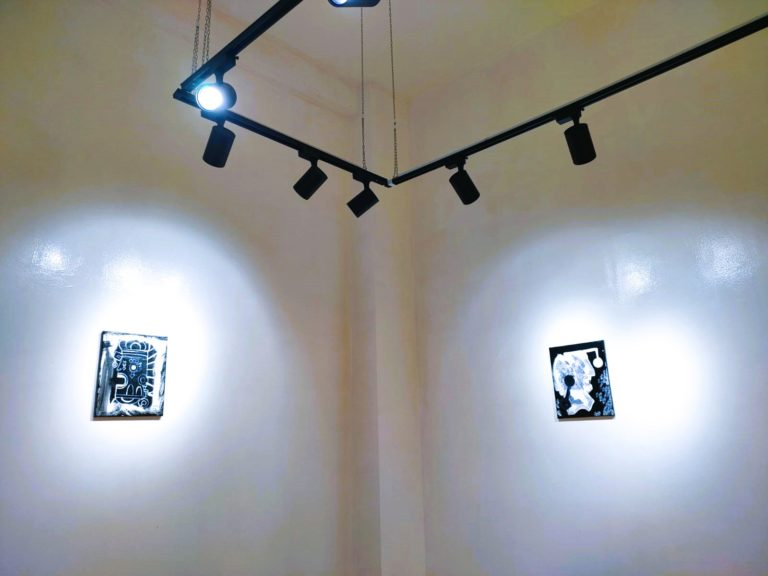
Artilugios de acero
Comisaria/curator: Georgina Santos da Silva
1 de octubre – 27 de diciembre 2022 / October 1st – december 27th 2022
Texto de sala – Exhibition text
.
Guto Ajayu se interesa por el uso del espacio negativo para atraer atención en un punto vital. La palabra artilugio, se refiere a un ardid o maña, especialmente cuando forma parte de algún plan para alcanzar un fin. Esta definición tiene cierta connotación enigmática al pensar en un objeto o personaje como un ardid o maña. El artista, al recorrer su obra, ve a los guerreros como defensores y héroes, pero en este caso, relata también ese lado oscuro, el de los guerreros convertidos en peones, y utilizados como herramienta de metal para llegar a un fin.
Es sobre este concepto que Ajayu desarrolla un cuerpo de trabajo que roza tanto la figuración como la abstracción.
Instaladas en los muros que conforman el espacio expositivo, podemos observar 3 piezas, que, aunque separadas físicamente, fueron pensadas por el artista para estar integradas en un ámbito visual conjunto -efecto que logra el tamaño de la sala, donde las piezas se enfrentan unas con otras con gran cercanía y todas quedan dentro del mismo espacio visual-, con la intención de lograr un efecto íntimo y orgánico, que enlaza la estética con el tema de la exposición: una visión íntima y terrible de la guerra.
Las 3 obras tratan de retratar las cabezas de 3 guerreros -con atributos y una estética precolombina, típica en el trabajo de Ajayu- que se diluyen, derriten y deforman, relatando de manera visiva e inmediata el dolor y la tristeza que causa el vivir la violencia de un conflicto bélico.
Cada una de estas piezas esconden un proceso mental y sentimental, desembocando en trazos inmediatos y dinámicos.
Se puede comprender de manera especial la dimensión del mensaje en esta muestra, si entendemos que el artista propone por primera vez una visión vulnerable, no solamente en su línea de trabajo, sino en su propia proyección personal, ya que él suele referirse a sí mismo como un guerrero, que suele mostrar su lado fuerte e insensible.
En la formulación de las piezas, el eje conductor es la ausencia de color y los gritos representados, creando una pequeña vorágine que mezcla la velocidad con un lento proceso de deconstrucción sentimental.
.
Guto Ajayu is interested in the use of negative space to attract attention to a vital point. The word gadget refers to a ruse or trick, especially when it is part of a plan to achieve an end. This definition has a certain enigmatic connotation when thinking of a character or object as a ruse or trick. The artist, when going through his work, sees the warriors as defenders and heroes, but in this case, he also recounts that dark side, that of the warriors turned into pawns, and used as a metal tool to reach an end.
It is around this concept that Ajayu develops a body of work that borders on both figuration and abstraction.
Installed on the walls of the exhibition space, we can observe 3 pieces, which, although physically separated, were designed by the artist to be integrated into a joint visual environment – an effect achieved by the size of the room, where the pieces face each other very closely and all remain within the same visual space-, with the intention of achieving an intimate and organic effect, which links aesthetics with the theme of the exhibition: an intimate and terrible vision of war.
The 3 works try to portray the heads of 3 warriors -with attributes and a pre-Columbian aesthetic, typical of Ajayu’s work- that are diluted, melted, and deformed, recounting in a visual and immediate way the pain and sadness caused by living the violence of a war conflict.
Each of these pieces hides a mental and sentimental process, leading to immediate and dynamic strokes.
The dimension of the message in this exhibition can be understood in a special way, if we understand that the artist proposes a vulnerable vision for the first time, not only in his line of work, but in his own personal projection, since he usually refers to himself like a warrior, who often shows his strong and insensitive side.
In the formulation of the pieces, the driving axis is the absence of color and the screams represented, creating a small maelstrom that mixes speed with a slow process of sentimental deconstruction.
